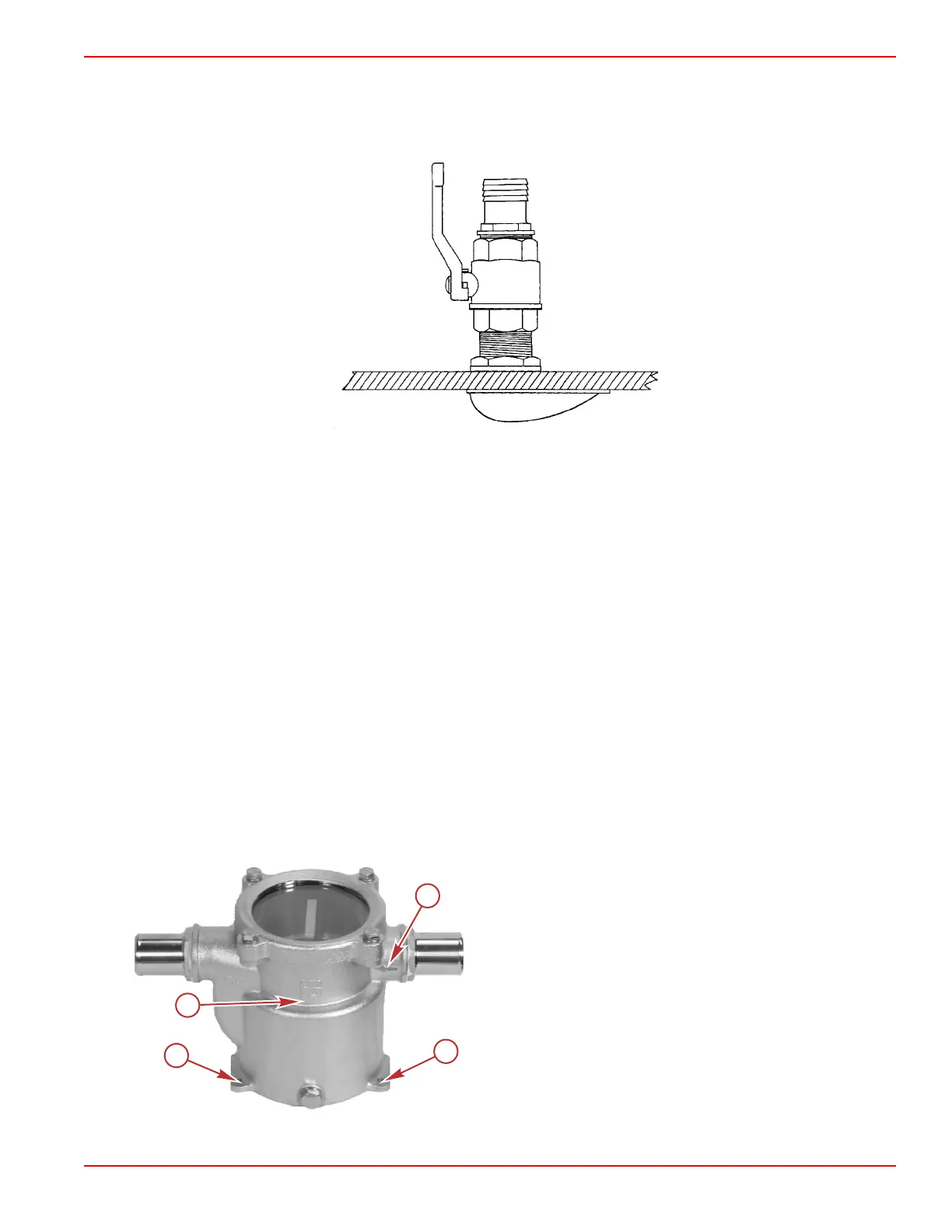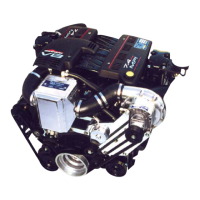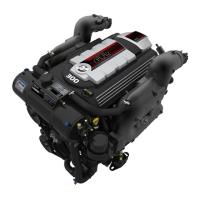The seacock must provide minimum restriction to seawater flow (refer to Specifications). A ball valve or gate valve is
recommended. The ball valve is most common and is typically equipped with a lever type handle that operates in a 90° arc.
This design gives a clear indication of whether the valve is open or shut. Industry standards require that the seacock be rigidly
attached to the hull at the seawater pickup. The seacock's location should be accessible for quick, easy operation.
7532
Typical seacock
Seawater Strainer
Seawater Strainer Mounting Requirements
Use a properly sized strainer to maintain an adequate supply of water for cooling the engine.
• Mount the seawater strainer in a location that will allow easy access for servicing, and maintenance.
• Mount the seawater strainer in a vibration free location.
• Do not mount the seawater strainer on the engine.
• If not equipped with a seacock, mount the seawater strainer above the seawater–line to prevent seawater entry into the
boat when servicing.
• Use a 32 mm (1‑1/4 in.) I.D. wire‑reinforced hose.
• Do not allow hoses to contact hot or moving parts on the engine.
Seawater Strainer Installation
Refer to the manufacturer's instructions for detailed installation, operation, and maintenance.
IMPORTANT: Use the following guidelines when installing a Mercury seawater strainer.
1. Position the seawater strainer in an appropriate location, below the level of the seawater pump.
2. Ensure that the arrow that indicates the direction of seawater flow points toward the seawater pump.
3. Install the seawater strainer using flat washers and lag bolts.
a - Seawater strainer
b - Arrow indicating direction of water flow
c - Mounting bolt hole location (bolts not shown)
Models with Closed Cooling
90-8M0099748 eng DECEMBER 2015 © 2016 Mercury Marine Page 6C-9
